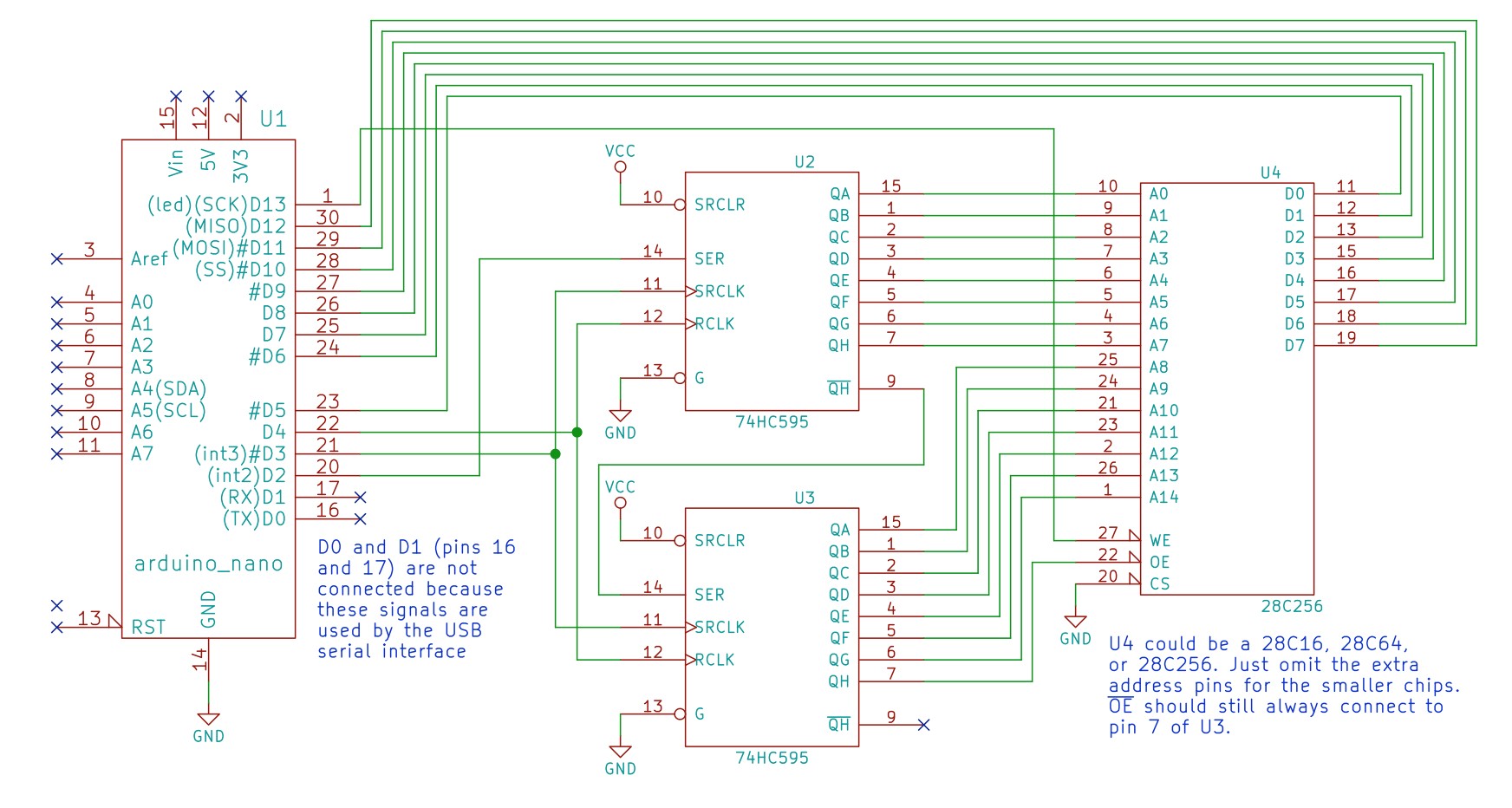An Eeprom Programmer is a crucial tool for anyone working with microcontrollers and embedded systems. It allows you to write and read data from Electrically Erasable Programmable Read-Only Memory (EEPROM) chips, enabling customization and flexibility in your projects. This article provides a comprehensive overview of EEPROM programmers, including their functionality, different types, and how they are used in conjunction with popular platforms like Arduino.
 Schematic of EEPROM programmer
Schematic of EEPROM programmer
Understanding EEPROM and its Applications
EEPROM is a non-volatile memory type, meaning it retains stored data even when power is removed. This makes it ideal for storing configuration settings, calibration data, and bootloaders in electronic devices. EEPROM programmers facilitate the process of transferring data to and from these chips, enabling you to modify the behavior of your circuits and devices. Common applications include:
- Microcontroller Programming: EEPROMs are often used to store program code for microcontrollers, allowing for field updates and customization without requiring specialized hardware.
- Data Logging: Devices can store sensor readings, operational parameters, and other critical data in EEPROM for later retrieval and analysis.
- Device Configuration: Storing customized settings in EEPROM allows devices to retain user preferences and operational parameters across power cycles.
Types of EEPROM Programmers
EEPROM programmers come in various forms, catering to different needs and budgets:
- Dedicated EEPROM Programmers: These standalone devices are specifically designed for programming EEPROMs and often support a wide range of chip types. They usually feature a user interface for selecting chip models and managing data transfer.
- Universal Programmers: These versatile programmers can handle various types of programmable chips, including EEPROMs, microcontrollers, and flash memory. They offer broader functionality but might be more expensive.
- DIY EEPROM Programmers: For hobbyists and those seeking a cost-effective solution, building a DIY programmer using platforms like Arduino is a viable option. These programmers offer basic functionality and are suitable for smaller projects.
Arduino as an EEPROM Programmer
Arduino boards, with their flexible input/output pins and programming capabilities, can be readily transformed into functional EEPROM programmers. By utilizing shift registers to expand the number of available pins, an Arduino can control the address, data, and control lines necessary to interface with parallel EEPROMs like the 28C16, 28C64, and 28C256.
A basic Arduino EEPROM programmer circuit typically involves connecting the EEPROM’s data lines to the Arduino’s digital pins and using shift registers to manage the address lines and output enable signal. The Arduino sketch then handles the timing and sequencing of signals to write or read data from the EEPROM chip.
Advanced Applications of Arduino EEPROM Programmers
Beyond basic programming, Arduino-based EEPROM programmers can be integrated into more complex projects:
- 8-Bit Computer Microcode: EEPROMs can be programmed to act as instruction decoders for custom-built 8-bit computers, enabling the execution of various instructions based on the stored microcode. This allows for experimentation with computer architecture and low-level programming.
- Multiplexed Displays: An Arduino can program an EEPROM to store data for driving multi-digit 7-segment displays. This enables efficient display of numerical and alphanumeric characters.
Conclusion
EEPROM programmers are indispensable tools for working with EEPROM chips, providing the means to customize and control electronic devices. From dedicated programmers to versatile universal devices and DIY Arduino-based solutions, there’s an option for every need and budget. Utilizing an Arduino as an EEPROM programmer offers a hands-on approach to understanding memory programming and its applications in embedded systems. By exploring the various types and applications of EEPROM programmers, you can unlock the full potential of EEPROM in your electronic projects.
